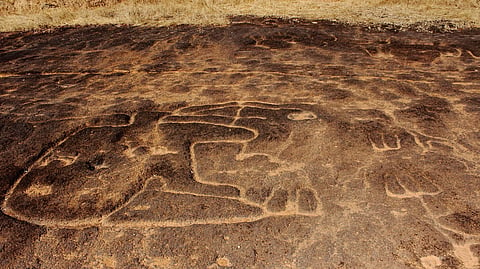
- Destinations
- Experiences
- Stay
- What's new
- Celebrating People
- Responsible Tourism
- CampaignsCampaigns
- SubscribeSubscribe
- Buy Now

When Goa flashed onto the global tourism radar in 2000 or so, it was for its pristine beaches, new-age flower-child ambience, and strobe-lit trance parties. Fifteen years later, the beaches are overwhelmed with garbage and illegal construction, the flower-children have fled, and trance parties are illegal, but those stereotypes still define the Goa experience, and millions of tourists chase their shadows all season long.
So while two, sometimes three, million visitors wedge themselves elbow-to-elbow on the coastline, very few venture to explore Goa's hinterland to get a feel for its extraordinary, many-layered heritage that extends back as far as history is recorded. But it takes but a few steps off the beaten path to realise that tiny Goa, the smallest state in India, has had an outsized impact on India and the world.
On the banks of the Kushavati River at Pansaimol, you can wander right onto a laterite shelf covered with astonishing 30,000-year-old rock carvings rutting bulls, a stag with spreading antlers, dancing girls. These are but one indication of Goa's settlement from the furthest reaches of antiquity its rich trading ports were mentioned by the Sumerians, the Etruscans, the Romans.
The Arabs' favourite "Hanjuman" became today's Anjuna. Remains of the thousand-year-old Kadamba trading port are still visible at Goa Velha, under the Zuari bridge on the way to Dabolim airport. But more impressive, and stunningly beautiful, is the dynasty's serene, secluded Tambdi Surla temple, the little basalt jewel they built in the Western Ghats foothills that was lost for centuries before being rediscovered in the 1940s.
Very commonly misunderstood as Portuguese, the spectacular range of architecture that flourished during the 450 years of the Estado da India in Goa is actually a self-confident amalgam of influences from across Europe and South America, that was made appropriate for the Konkan climate transformed by Indian customs, mores and traditions, and then constructed by local craftsmen, who often migrated into the territory seasonally porting along their own ideas borrowed from other parts of India.
Thus, there are no houses like these in Portugal, and you certainly find no churches like the magnificent collection in Old Goa's UNESCO World Heritage precinct anywhere in the world. Here are Asia's largest church and convent, Asia's first cathedral and basilica, the stunning domed St Cajetan's (built over a secret well), and the Capela do Monte on a headland overlooking the sweep of the Mandovi river basin all the way to Panjim.
Even more significant is Santana de Talaulim, an extraordinary church that is unaccountably overlooked by tourists and Goans alike. It is Asia's second-largest church, falling short of the biggest by just a few square metres. But what sets it apart is the quality of its 18th-century plaster mouldings. Santana de Talaulim is a genuine masterpiece of the Indian Baroque, a native Latinate style, created by assertive Goans who wanted to demonstrate their self-worth to the Europeans.
Similar impulses underlie the extravagant houses of the aristocratic grandees of Goa, many of which are open to visitors --- the unforgettable Figueiredo palazzo in Loutolim, the mighty Menezes-Braganza mansions in Chandor, the dream-like riverfront eyrie of Solar dos Colacos in Ribandar. These preserve a feeling of bygone years, but for an updated version, there is old Panjim's 'Latin Quarter', the wonderful collection of 19th-century houses that stretches along the Ourem river through the miniature neighbourhoods of Sao Tome, Cortim, Fontainhas, Mala and Portais.
Here there is both preservation and revival, as many houses are maintained by the original families that built them, while others now showcase boutiques, art galleries, inns and restaurants, as well as the office of late architect Charles Correa's foundation.
Across the river from Panjim, the likely blueprint for Goa's future heritage preservation was quietly opened last year. The once-ruined 500-year-old Reis Magos fortress has been tastefully restored into an aesthetic marvel. Here, there is a display of artist Mario de Miranda's artworks, and also a nice exhibit about the history of the site and its reconstruction by architect Gerard da Cunha and the UK-based Helen Hamlyn Trust.
In a state renowned for splendid sunsets, this is the very best spot to experience superlative flame-outs that light up the evening skies, extending across the ocean right up to the horizon. Remember that in 10 short minutes' drive, you can get back to the beach, and the nightlife, but this timeless moment steeped in Goa's heritage is the one you're never going to forget.
Goa has its own international airport, Dabolim Airport, which is well-connected to major cities in India and abroad. After landing at the airport, you can hire a taxi or use other local transportation to reach your destination in Goa.
